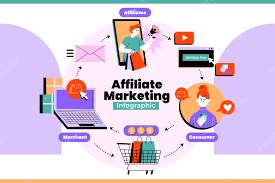
Web traffic represents the flow of visitors to a website, measured in terms of the number of users and the frequency and duration of their visits. It encompasses both organic traffic (people who find the website through search engine results) and referral traffic (visitors who come from other websites or social media platforms). Tracking web traffic provides valuable insights into user behavior, popular content, and conversion rates, allowing businesses to optimize their online strategies.
For small businesses, a strong online presence is essential for attracting new customers. Higher web traffic leads to increased visibility, as more people discover and explore the website. By implementing search engine optimization (SEO) techniques, small businesses can optimize their websites to appear higher in search engine rankings, thus attracting more organic traffic. This increased exposure helps establish brand recognition and positions the business as a reliable and trusted source within its industry.
Web traffic acts as a catalyst for generating leads and conversions, driving small business growth. When more people visit a website, the chances of converting them into paying customers or subscribers increase. By analyzing web traffic data, small businesses can identify trends, understand user preferences, and tailor their marketing strategies accordingly. This data-driven approach allows them to create targeted campaigns, personalize user experiences, and increase the likelihood of converting visitors into loyal customers.
A high volume of web traffic signifies that the website is attracting interest and engagement. This engagement builds trust and credibility for small businesses. As visitors spend more time on a website, exploring its content, they perceive the business as knowledgeable and reliable. By consistently delivering valuable and relevant content, small businesses can position themselves as authorities in their respective industries, fostering trust and attracting a loyal customer base.
Web traffic data provides small businesses with valuable insights into user behavior and preferences. Analyzing metrics such as bounce rate, time on site, and popular pages helps identify areas for improvement and optimize user experience. By understanding how visitors navigate the website and what content resonates with them, small businesses can make informed decisions on website design, content creation, and overall marketing strategies. A seamless and user-friendly experience increases the likelihood of visitors returning and engaging further with the business.
Web traffic data plays a crucial role in targeted marketing efforts for small businesses. By analyzing referral traffic, businesses can identify which external sources are driving the most visitors to their website. This knowledge allows them to focus their marketing efforts on the most effective channels, whether it's social media platforms, industry-specific directories, or partnerships with other websites. By concentrating resources on high-performing sources, small businesses can optimize their marketing budget and maximize their return on investment (ROI).
Monitoring web traffic helps small businesses stay competitive by providing insights into market trends and user expectations. By tracking visitor demographics, small businesses can identify their target audience's characteristics, preferences, and evolving needs. This information enables businesses to adapt their products, services, and marketing strategies accordingly. Staying ahead of market trends ensures that small businesses remain relevant and competitive in an ever-changing digital landscape.
In today's digital age, having a strong online presence is essential for small businesses to thrive and grow. However, attracting web traffic can be a challenging task. With numerous websites competing for attention, it's crucial for small businesses to employ effective strategies to increase their web traffic.
In this article, we will explore five simple yet powerful ways that small businesses can utilize to drive more traffic to their websites.
Search Engine Optimization (SEO)
Search Engine Optimization (SEO) is a fundamental strategy for improving website visibility and driving organic traffic. By optimizing your website's content and structure, you can increase your chances of ranking higher in search engine results pages (SERPs). Here are some key SEO tactics to implement:
a. Keyword research: Identify relevant keywords and phrases related to your business and target audience. Use keyword research tools to discover high-ranking and low-competition keywords to incorporate into your content.
b. On-page optimization: Optimize your website's title tags, meta descriptions, headings, and content with the chosen keywords. Ensure your content is informative, engaging, and valuable to readers.
c. Quality link building: Build relationships with reputable websites and earn backlinks to your site. High-quality backlinks can boost your website's authority and improve its ranking in search results.
d. Mobile optimization: With the increasing use of mobile devices, it's crucial to have a mobile-friendly website. Ensure your website is responsive and optimized for mobile users.
Content Marketing
Creating and promoting high-quality content is a powerful way to increase web traffic. By delivering valuable and relevant information, you can attract and engage your target audience. Here are some content marketing strategies to implement:
a. Blogging: Start a blog on your website and regularly publish informative and engaging articles related to your industry. Incorporate relevant keywords to improve search engine visibility.
b. Guest blogging: Contribute articles to other reputable websites in your industry. Include a link back to your website within the content or author bio. This can help drive traffic and increase your website's exposure.
c. Video content: Create engaging and informative videos related to your products or services. Publish them on platforms like YouTube and embed them on your website to attract a wider audience.
d. Infographics: Visual content like infographics can be highly shareable and attract attention. Create visually appealing infographics that provide valuable information and share them on your website and social media platforms.
Social Media Marketing
Social media platforms provide an excellent opportunity for small businesses to connect with their target audience and drive web traffic. Here's how you can leverage social media marketing:
a. Choose the right platforms: Identify the social media platforms where your target audience is most active. Focus your efforts on those platforms to maximize your reach.
b. Consistent posting: Regularly share engaging content, including blog posts, videos, infographics, and promotional offers. Use eye-catching visuals and compelling captions to capture attention.
c. Engage with your audience: Respond to comments, messages, and mentions promptly. Encourage conversations, ask questions, and run contests or giveaways to boost engagement.
d. Collaborate with influencers: Partner with social media influencers or industry experts who have a significant following. They can help promote your brand, products, or services to their audience, thereby driving traffic to your website.
Email Marketing
Email marketing remains a highly effective way to drive traffic and engage with your audience. Here's how you can utilize email marketing:
a. Build a subscriber list: Offer valuable incentives, such as exclusive content or discounts, to encourage visitors to subscribe to your email list. Place opt-in forms strategically on your website.
b. Personalize your emails: Segment your email list based on user preferences and behaviors. Send targeted and personalized emails that provide relevant content and offers.
c. Share valuable content: Use email newsletters to share your latest blog posts, industry news, and exclusive offers. Include clear and compelling call-to-action buttons to drive traffic to your website.
d. Optimize for mobile: Ensure your emails are optimized for mobile devices, as a significant portion of email opens occurs on smartphones and tablets.
Collaborations and Partnerships
Collaborating with other businesses and industry partners can significantly increase your web traffic. Here are some collaboration strategies to consider:
a. Cross-promotion: Partner with complementary businesses and cross-promote each other's products or services. This can include guest blogging, sharing each other's content on social media, or featuring each other in newsletters.
b. Joint webinars or events: Organize webinars or events in collaboration with other businesses or industry experts. This allows you to tap into their audience and attract new visitors to your website.
c. Affiliate marketing: Create an affiliate program where partners or influencers earn a commission for driving traffic or sales to your website. This incentivizes others to promote your products or services and generate web traffic.
Conclusion
Increasing web traffic is crucial for the success of small businesses in today's competitive online landscape. By implementing the five strategies outlined in this article—search engine optimization, content marketing, social media marketing, email marketing, and collaborations—small businesses can effectively attract more visitors to their websites.
Consistent effort and a focus on delivering valuable and engaging content will help drive targeted traffic, boost brand awareness, and ultimately lead to increased conversions and growth.






















